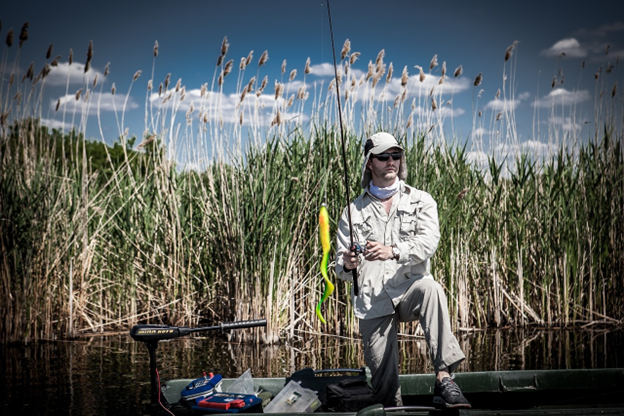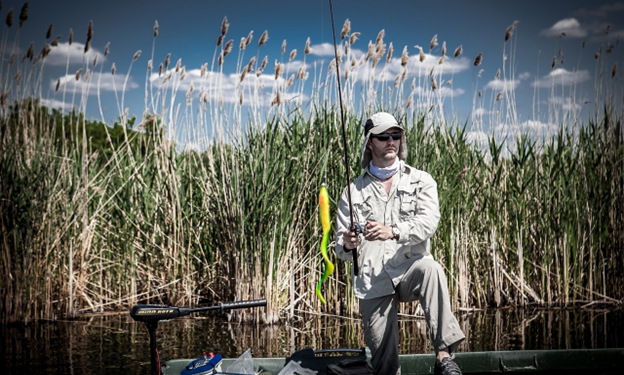Choosing the Perfect Lure

Fishing lures come in all sorts of shapes, sizes and colors – choosing the appropriate lure can make a significant difference in your catch rate. Before selecting a lure, it’s essential to consider all your options and head out.
Size
Discovering all of the freshwater lure options at your local tackle store may be daunting, with baits offering different color combinations, sizes, and features – it is crucial that a systematic approach be taken when selecting an ideal fishing lure for an upcoming fishing expedition.
First and foremost, determine which species of fish you intend to target. This will narrow down your search significantly as many predatory fish species have distinct feeding and lifestyle needs.
Figuring out the size of the target fish will assist in selecting an appropriate lure size. For instance, smallmouth bass typically prefer smaller lures than their larger counterparts – pencil poppers may work best on smallmouths while shallow running jerkbaits work great against largemouths.
You should also consider the season as different weather can drastically change a fish’s feeding patterns. Winter-feeders usually move closer to the bottom, while in spring and summer more fish consume topwater baits.
Color
Color is another key factor that will impact how well a lure attracts fish, due to the interaction between light and reflection off of water surfaces. A brightly colored lure may be more visible to fish in murky or murky water environments while darker hues may work better when fishing clear waters.
Also, your lure’s color must reflect the depth you are fishing at. According to these chatterbait bass fishing tips, lure colors fade as they descend through the water column, with reds disappearing quickly before becoming more pastel at 15 feet. To counter this effect, some anglers use lures with fluorescent heads and solid or luminous tail colors so their bait will glow even under low light conditions.
The shape of lures is also an important consideration. Many hard lures are created to resemble aquatic predators such as insects or prey native to an ecosystem; examples can include flies, minnows, worms, crawfish or mice. Artificial lures may feature precise details like eyes and whiskers.
Other lures are tailored to replicate the behavior of specific species of fish. For instance, a crankbait designed with rattles is likely to attract bass that feed on floating crawfish that are flapping around in the water; this bait may not work on other species or in different parts of a lake.
Weight
Weight should be one of your key considerations when it comes to selecting an effective fishing lure. A lure must be light enough for fish to detect it without being difficult for anglers to handle or cast; its exact weight depends on which species of fish you’re targeting and their feeding habits; therefore, it is crucial that research be performed prior to heading out fishing.
An effective way of selecting the ideal lure weight is to observe what size baitfish your target species eats, or you can use a scale. Lighter lures tend to work best for shallow water environments while heavier lures work well when fishing deeper waters.
Weight of Hook When selecting a fishing lure, hook weight should also be an important consideration. You should ensure that the lure and hook are compatible so as to reduce the chances of breaking your line or losing catch. A good guideline would be selecting lures with hook sizes similar to your fishing line size; additionally, weight has an impact on how easily jigable they may be.
Action
There is an assortment of lures on the market today, making it essential to select one suitable for the fish species you’re targeting, the conditions, and water body in which you are fishing. Conventional wisdom states that selecting one with appropriate size, color and action will increase your odds of landing a bite; however, some anglers have demonstrated how other factors such as knowing what you can expect from each one and its handling during retrieval or trolling may have more of an effect than its physical appearance alone.
A few basic lures include jigs, spoons and crankbaits. Jigs typically consist of round weights with eyespots and tails made up of feathers, plastic or hair to mimic an insect or fish; spoons have spinning blades which produce vibrations and flashes when moved through water; crankbaits provide another way of fishing in deep waters.
Crankbaits (seen here: http://vtfishandwildlife.com/fish/fishing-opportunities/fishing-basics/common-lures-and-rigs/mid-depth-lures-and-rigs-crankbaits) are hard baits designed to be fished in the middle of the water column and can either be fished using straight retrieval or by jerking and twitching to mimic the movement of live baitfish. Their selection will depend on what species of prey are available locally as predators have evolved to recognize different prey sources.
When purchasing lures, quality is always superior to quantity. While it might be tempting to purchase 10 packs of low-grade jerk bait online at once for less money, this will guarantee your lures break easily or fail during fishing sessions. Instead, look for name brands such as Zman, Berkeley, Rapala, Yo Zuri or VMC products for the best results.
Tail
Understanding which fishing lure is appropriate for your conditions can be daunting, yet knowing how to select the ideal lure will maximize your time on the water and lead to more fish being caught. Understanding this topic will allow you to maximize your fishing efforts and catch more fish faster!
When selecting the appropriate bass lures, it is essential to keep in mind the species you are targeting as well as fishing conditions. For instance, in murky environments it may be advantageous to choose smaller lures such as shallow-running crankbaits or jerkbaits over larger swimbaits since their smaller sizes will enable you to cover more water quicker while simultaneously attracting fish.
The action of a fishing lure can have a major influence on its success. When fishing along the bottom, selecting plastic bait with paddle tails will make your bait appear more lifelike, while when jigging, choosing a straight tail lure may work better.
Size is another crucial component when selecting lures, especially when targeting small fish. A smaller hook will enable easier hook-ups and be less likely to snag or break off; for larger species however, bigger hooks tend to work best by being able to hold more weight.




